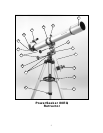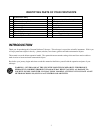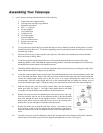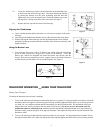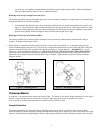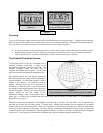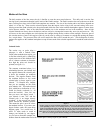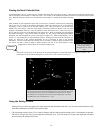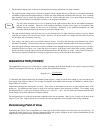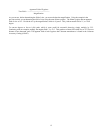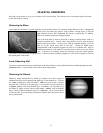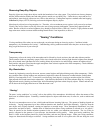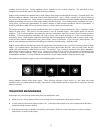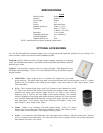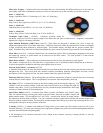
Finding the North Celestial Pole
In each hemisphere, there is a point in the sky around which all the other stars appear to rotate. These points are called the celestial poles
and are named for the hemisphere in which they reside. For example, in the northern hemisphere all stars move around the north celestial
pole. When the telescope's polar axis is pointed at the celestial pole, it is parallel to the Earth's rotational
axis.
Figure 12 - The position of
the Big Dipper changes
throughout the year and the
night.
Many methods of polar alignment require that you know how to find the celestial pole by identifying
stars in the area. For those in the northern hemisphere, finding the celestial pole is not too difficult.
Fortunately, we have a naked eye star less than a degree away. This star, Polaris, is the end star in the
handle of the Little Dipper. Since the Little Dipper (technically called Ursa Minor) is not one of the
brightest constellations in the sky, it may be difficult to locate from urban areas. If this is the case, use
the two end stars in the bowl of the Big Dipper (the pointer stars). Draw an imaginary line through them
toward the Little Dipper. They point to Polaris (see Figure 13). The position of the Big Dipper changes
during the year and throughout the course of the night (see Figure 12). When the Big Dipper is low in
the sky (i.e., near the horizon), it may be difficult to locate. During these times, look for Cassiopeia (see
Figure 13). Observers in the southern hemisphere are not as fortunate as those in the northern
hemisphere. The stars around the south celestial pole are not nearly as bright as those around the north.
The closest star that is relatively bright is Sigma Octantis. This star is just within naked eye limit
(magnitude 5.5) and lies about 59 arc minutes from the pole.
Definition
The north celestial pole is the point in the northern hemisphere around which all stars appear to rotate. The
counterpart in the southern hemisphere is referred to as the south celestial pole.
Figure 13
The two stars in the front of the bowl of the Big Dipper point to Polaris which is less
than one degree from the true (north) celestial pole. Cassiopeia, the “W” shaped
constellation, is on the opposite side of the pole from the Big Dipper. The North
Celestial Pole (N.C.P.) is marked by the “+” sign.
Using the Setting Circles
Setting Circles are dials (or gauges) for right ascension and declination that allow you to locate celestial objects easily
from their coordinates as listed in a star chart or atlas.
1. The declination setting circle (#2) is scaled in degrees and the right ascension setting circle is incremented in minutes.
The circles will get you close to your target but not directly on it. Also, the accuracy of your polar alignment will affect
how accurate your setting circles read.
10



